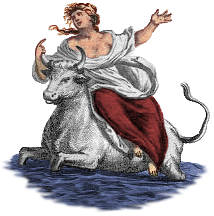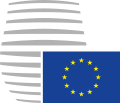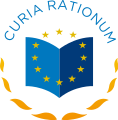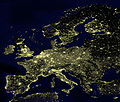Portal:European Union
Introduction
The European Union (EU) is a supranational political and economic union of 27 member states that are located primarily in Europe. The Union has a total area of 4,233,255 km2 (1,634,469 sq mi) and an estimated total population of over 448 million. The EU has often been described as a sui generis political entity (without precedent or comparison) combining the characteristics of both a federation and a confederation. Containing 5.8% of the world population in 2020, EU member states generated a nominal gross domestic product (GDP) of around US$16.6 trillion in 2022, constituting approximately one sixth of global nominal GDP. Additionally, all EU states except Bulgaria have a very high Human Development Index according to the United Nations Development Programme. Its cornerstone, the Customs Union, paved the way to establishing an internal single market based on standardised legal framework and legislation that applies in all member states in those matters, and only those matters, where the states have agreed to act as one. EU policies aim to ensure the free movement of people, goods, services and capital within the internal market; enact legislation in justice and home affairs; and maintain common policies on trade, agriculture, fisheries and regional development. Passport controls have been abolished for travel within the Schengen Area. The eurozone is a group composed of the 20 EU member states that have fully implemented the economic and monetary union and use the euro currency. Through the Common Foreign and Security Policy, the union has developed a role in external relations and defence. It maintains permanent diplomatic missions throughout the world and represents itself at the United Nations, the World Trade Organization, the G7 and the G20. Due to its global influence, the European Union has been described by some scholars as an emerging superpower. In 2012, the EU was awarded the Nobel Peace Prize. The United Kingdom became the only member state to leave the EU, in 2020; ten countries are aspiring or negotiating to join it. (Full article...) Selected article The 1985 Schengen Agreement is an agreement among European states which allows for the abolition of systematic border controls between the participating countries. It also includes provisions on common policy on the temporary entry of persons, the harmonisation of external border controls and cross-border police co-operation. A total of 30 countries – including all European Union states and three non-EU members Iceland, Norway, and Switzerland – have signed the agreement and 26 have implemented it so far. The Republic of Ireland and the United Kingdom only take part in the police co-operation measures and not the common border control and visa provisions. Border posts and checks have been removed between Schengen countries and a common 'Schengen visa' allows tourist or visitor access to the area. The agreement was originally signed on 14 June 1985, by five European countries (Belgium, France, Germany, Luxembourg, and the Netherlands). It was signed aboard the ship Princesse Marie-Astrid on the Moselle River, near Schengen, a small town in Luxembourg on the border with France and Germany. Selected picturePhotograph credit: Arild Vågen Vaxholm Fortress is a historic fortification on the island of Vaxholmen in the Stockholm archipelago just east of the Swedish town of Vaxholm. The first structure, a wooden blockhouse, was constructed by King Gustav I in 1548 as a defensive structure and customs post at this strategic site on the sea approach to Stockholm. It was replaced by a round stone tower during John III's reign. The present buildings date to 1833; their design was inspired by ideas on fortifications propounded by French engineers the marquis de Montalembert and Lazare Carnot. The fortress has been listed as a state monument since 1935 and now houses the Vaxholm Fortress Museum.
Did you know?... that the presidency of the EU Council rotates every half year? ... that the EU parliamentary election is the world's biggest transnational election? ... that the European Union was awarded the Nobel Peace Prize in 2012? Selected cityLjubljana is the capital and largest city in Slovenia. The city of Ljubljana is the cultural, scientific, economic, political and administrative center of Slovenia. It is situated in central Slovenia, between the Alps and the Mediterranean. The city is divided into several quarters, formerly municipalities, the main ones being Šiška, Bežigrad, Vič, Moste, and Center, which also correspond to the main electoral constituencies of the city. Its transport connections, concentration of industry, scientific and research institutions and industrial tradition underlie its leading economic position. Ljubljana is the seat of the central government, administrative bodies and all government ministries. It is also the seat of Parliament and the Office of the President of Slovenia. General imagesThe following are images from various European Union-related articles on Wikipedia.
TopicsFeatured contentFeatured articles
Featured lists
Featured contentGood articles
CategoriesRelated portalsAssociated WikimediaThe following Wikimedia Foundation sister projects provide more on this subject:
Discover Wikipedia using portals |
































































